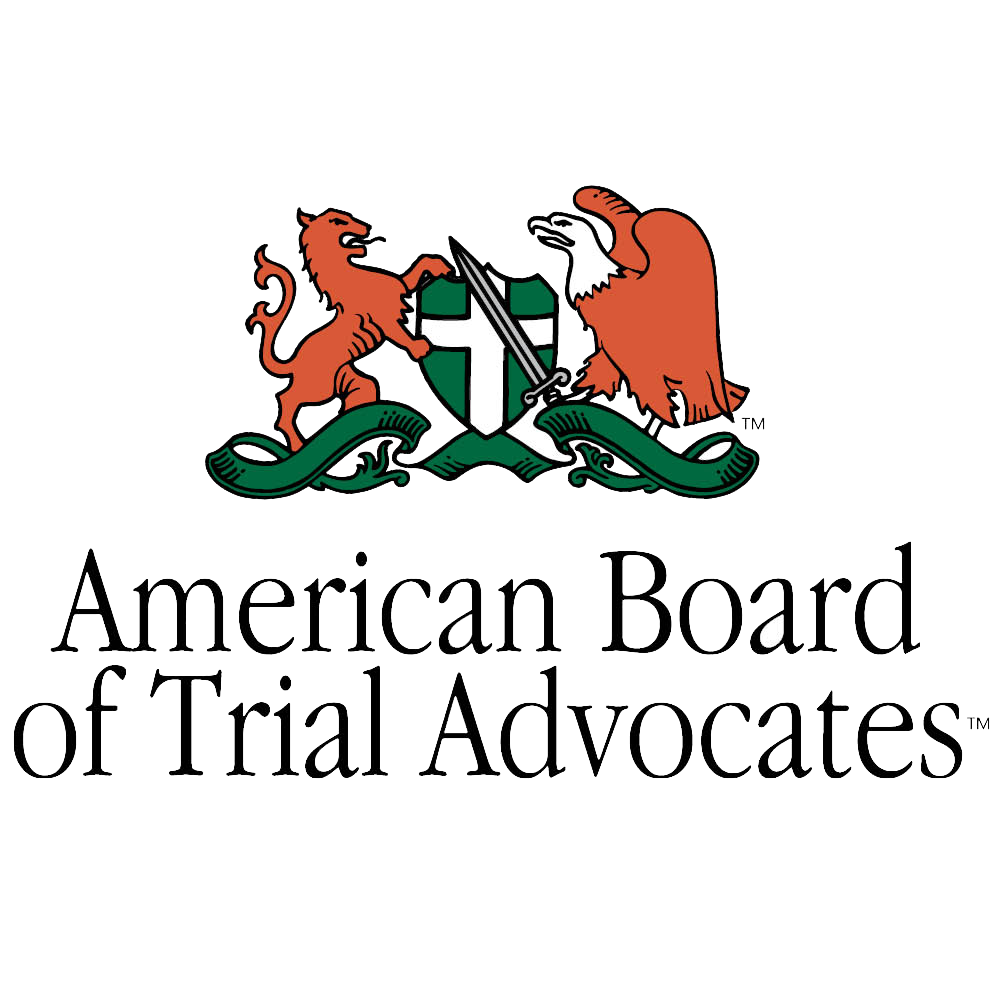
The Invisible Threat: Understanding Truck Blind Spot Accidents in Florida
Every day on Florida’s Turnpike, unsuspecting drivers enter the “no-zones” around commercial trucks—often with devastating consequences. These blind spots, where semi-truck drivers simply cannot see other vehicles, create silent danger zones that claim lives and cause catastrophic injuries with alarming frequency. What makes these accidents particularly tragic is that many motorists don’t realize they’ve entered a danger zone until it’s too late.
The reality is that obstructed views in commercial vehicles aren’t just inconvenient—they create significant safety concerns that prevent drivers from seeing traffic lights, road hazards, and cross traffic. If you or a loved one has been involved in a truck blind spot collision, understanding these hidden dangers is the first step toward protecting your rights and securing the compensation you deserve.
Don’t let the complexities of a truck blind spot accident overwhelm you. Reach out to GOLDLAW for guidance and support in navigating your legal journey. Call us at 561-222-2222 or contact us today to explore your options and secure the compensation you deserve.

Florida Law and Truck Blind Spot Accidents: What Every Motorist Should Know
Under Florida law, both commercial truck drivers and passenger vehicle operators have legal responsibilities to maintain safe driving practices. However, many people don’t realize that it is explicitly unlawful in Florida to operate a motor vehicle with objects placed or hung in the vehicle that obstruct or interfere with the operator’s view through the windshield or prevent a clear view of road and traffic conditions. This law applies with even greater force to commercial vehicles, where blind spots are already inherently dangerous. When a trucking company or driver fails to maintain proper visibility, they may be legally liable for resulting accidents.
Additionally, trucking companies must adhere to federal regulations regarding driver training, specifically on blind spot awareness and mitigation. Understanding these legal frameworks is crucial, as they form the foundation of any injury claim following a blind spot accident. In Florida, the comparative negligence standard means that even if you were partially at fault, you may still be entitled to recover damages proportionate to the truck driver’s or company’s liability. Aside from the legalities, the impact of blind spots on road safety is serious and can have devastating ramifications. This makes it vital to document all aspects of the accident, especially any visibility issues that may have contributed to the collision.
The Anatomy of a Truck Blind Spot Accident: How These Crashes Unfold
Understanding how blind spot accidents typically develop can help you recognize dangerous situations before they become critical. Truck blind spot accidents don’t just happen randomly—they follow patterns that stem from the fundamental physics and visibility limitations of large commercial vehicles. What’s particularly concerning is that reduced situational awareness while driving is a significant safety concern, as drivers need to maintain awareness of their environment to identify potential hazards and respond effectively. Here’s how these dangerous scenarios typically progress:
-
Initial Positioning: The passenger vehicle enters one of the four major blind spots around a semi-truck—directly behind, directly in front, or alongside either side of the trailer. The side blind spots are particularly dangerous on the passenger side, extending nearly two lanes wide.
-
Reduced Situational Awareness: Both the truck driver and the passenger vehicle operator often experience diminished environmental awareness.
-
False Assumptions: Drivers frequently make dangerous assumptions about their visibility to others. Many passenger vehicle drivers mistakenly believe that if they can see the truck’s mirrors, the truck driver can see them—a potentially fatal misconception.
-
Critical Maneuver: The accident typically occurs when either vehicle changes lanes, merges, or turns without recognizing the presence of the other. On Florida’s Turnpike, where speeds frequently exceed 70 mph, these split-second misjudgments can be catastrophic.
-
Impact Dynamics: Due to the massive weight disparity between commercial trucks (up to 80,000 pounds) and passenger vehicles (typically 3,000-4,000 pounds), these collisions often result in severe injuries or fatalities for the occupants of the smaller vehicle.
Navigating the Aftermath: How GOLDLAW Addresses Truck Blind Spot Accident Cases
After a truck blind spot accident on Florida’s Turnpike or elsewhere in the state, victims often face overwhelming challenges. From mounting medical bills to lost income and the battle with insurance companies, the path forward can seem impossible to navigate alone. At GOLDLAW, we understand that these accidents involve complex liability issues that require knowledge of both Florida state laws and federal trucking regulations. Our approach begins with a thorough investigation of the accident scene, including examination of the truck’s blind spot zones and any visibility obstructions that may have contributed to the collision.
For many years, GOLDLAW has been the go-to law firm for trucking accident cases. We meticulously gather evidence, including electronic logging device (ELD) data, driver records, and maintenance logs that may reveal negligence. What sets our firm apart is our deep understanding of the unique challenges presented by commercial vehicle cases, particularly those involving visibility issues and blind spots. We work closely with accident reconstruction officials who can demonstrate exactly how the blind spot contributed to your accident, creating compelling evidence that strengthens your claim. Rather than simply processing your case, we develop a comprehensive strategy tailored to your specific situation, recognizing that each blind spot accident has its own unique dynamics and challenges.
The Four Deadly Blind Zones Around Semi-Trucks on Florida Highways
Understanding the specific blind spots around commercial trucks is crucial for avoiding dangerous situations on Florida’s busy highways, especially the high-speed Turnpike system. These blind zones are more extensive and dangerous than most drivers realize, and they create significant safety hazards due to obstructed views that prevent truck drivers from seeing surrounding traffic. Commercial drivers receive specific training on these blind spots, but passenger vehicle drivers often remain dangerously unaware of the exact dimensions and risks. The four primary blind spots around semi-trucks create zones where other vehicles become essentially invisible to the truck driver, despite the presence of mirrors and safety equipment.
Front, Rear, and Side No-Zones: Where Most Blind Spot Accidents Occur
The front blind spot extends approximately 20 feet from the front of the truck cab, creating a danger zone where smaller vehicles disappear from the driver’s view due to the cab’s height. The rear blind spot is even more extensive, stretching about 30 feet behind the trailer—an area where following too closely can be fatal, especially during sudden braking situations. However, the most dangerous blind spots are along the sides of the truck.
The left-side blind spot covers approximately one lane, while the right-side blind spot is significantly larger, extending across two or more lanes. This asymmetrical risk means that passing on the right side of a semi-truck is particularly hazardous. We’ve observed that many Florida drivers underestimate these danger zones, particularly when merging onto the Turnpike where traffic patterns force quick lane changes around commercial vehicles.
Technology and Responsibility: Modern Solutions to Blind Spot Dangers
The trucking industry has made significant technological advancements to address blind spot hazards. Yet, these safety features remain inconsistently implemented across fleets operating on Florida’s roadways. Modern blind spot monitoring systems, 360-degree camera arrays, proximity sensors, and radar-based detection systems can dramatically reduce accident risks by alerting drivers to vehicles in their blind zones.
However, the presence (or absence) of these technologies can become a critical factor in determining liability following a blind spot accident. When a trucking company fails to equip their vehicles with available safety technology, or when drivers ignore the warnings these systems provide, they may be demonstrating negligence. Additionally, even with technological assistance, truck drivers must maintain proper vigilance and not become overly reliant on these systems.
Distracted Driving and Diminished Awareness: A Deadly Combination
Technology alone cannot eliminate blind spot risks, particularly when driver attention is compromised. Drivers often make false assumptions that they can safely engage in distracting activities while driving, such as using phones or adjusting entertainment systems. When these distractions combine with blind spot vulnerability, the results can be catastrophic. Florida law explicitly prohibits texting while driving, and commercial drivers face even stricter regulations under federal law. When distracted driving combines with blind spot negligence, it creates a particularly strong case for liability. Trucking companies are responsible for enforcing policies against driver distraction and implementing proper training programs to maintain situational awareness around blind spots.
Florida’s Turnpike: Unique Blind Spot Dangers in a High-Speed Environment
Florida’s Turnpike presents specific challenges that amplify blind spot risks beyond those found on typical roadways. With speeds frequently exceeding 70 mph, reaction times are dramatically reduced, making blind spot awareness even more critical. The Turnpike’s unique configuration, including numerous entry and exit ramps, service plazas, and toll areas, creates constantly changing traffic patterns that require heightened vigilance from all drivers, especially those operating commercial vehicles with significant blind spots.
Additionally, the high volume of tourist traffic means many drivers are unfamiliar with the roadway and may make unpredictable maneuvers around commercial vehicles. Construction zones, which are common on the Turnpike system, further complicate visibility and traffic flow, creating additional blind spot hazards.
Weather Factors and Visibility Challenges Specific to Florida
Florida’s unique weather patterns create additional visibility challenges that exacerbate blind spot dangers. Sudden afternoon thunderstorms, common throughout much of the year, can instantly reduce visibility and create slick road conditions that make blind spot accidents more likely. Morning fog in certain sections of the Turnpike, particularly in central Florida, can severely limit visibility for all drivers.
During these conditions, the importance of maintaining proper following distance and avoiding truck blind spots becomes even more critical. Hurricane season brings its own set of visibility challenges, with high winds that can affect truck stability and heavy rains that drastically reduce visibility. Trucking companies operating in Florida have a responsibility to train their drivers on these specific regional hazards and ensure they take appropriate precautions when weather affects visibility around blind spots.
Frequently Asked Questions
-
What should I do immediately after being involved in a truck blind spot accident on Florida’s Turnpike?
First, seek medical attention for any injuries, even if they seem minor—some serious injuries may not be immediately apparent. If possible, document the accident scene by taking photos of vehicle positions, damage, and any relevant road conditions. Collect contact information from witnesses and obtain the truck driver’s name, company information, and insurance details. Report the accident to law enforcement and ensure an official report is filed. Avoid making statements about fault to insurance representatives before consulting with a truck blind spot accident lawyer in West Palm Beach who can protect your rights and guide you through the complex claims process.
-
How does Florida’s comparative negligence law affect my truck accident claim if I was partially in the truck’s blind spot?
Florida follows a modified comparative negligence system, which means your compensation may be reduced by your percentage of fault in the accident. However, being in a truck’s blind spot doesn’t automatically make you negligent. Commercial truck drivers receive training to check blind spots and operate their vehicles safely. A Florida semi-truck safety attorney can help establish that the truck driver failed to properly check blind spots, improperly changed lanes, or violated other safety regulations. Even if you are found partially at fault, you can still recover damages proportionate to the truck driver’s or company’s liability. This makes professional legal representation crucial to ensure you’re not unfairly assigned a higher percentage of fault.
-
What types of compensation can I recover after a truck blind spot accident on Florida’s Turnpike?
Victims of truck blind spot accidents in Florida may be eligible for several types of compensation. These include economic damages such as medical expenses (both current and future), lost wages, loss of earning capacity, and property damage. Non-economic damages may include pain and suffering, emotional distress, loss of enjoyment of life, and loss of consortium. In cases involving extreme negligence, punitive damages may be available. A West Palm Beach truck crash lawyer can evaluate your specific case to determine which damages apply and develop a comprehensive claim strategy to pursue maximum compensation for all applicable categories of damages.
-
How long do I have to file a lawsuit after a truck blind spot accident in Florida?
In Florida, the statute of limitations for personal injury claims, including truck accidents, is two years from the date of the accident. This means you must file your lawsuit within that timeframe or lose your right to pursue compensation. However, building a strong case against a trucking company takes time, as it involves gathering evidence, analyzing federal compliance records, and often consulting with witnesses. Additionally, insurance claims should be initiated much sooner than the two-year deadline. For these reasons, it’s advisable to consult with a Florida semi-truck safety attorney as soon as possible after your accident to ensure all deadlines are met and your case is properly developed.
-
What makes GOLDLAW qualified to handle my truck blind spot accident case in West Palm Beach?
GOLDLAW brings experience in commercial truck accident litigation, particularly cases involving blind spot collisions on Florida highways. Our firm has a comprehensive understanding of both state and federal transportation regulations that govern commercial vehicles, including specific visibility requirements and driver training standards. We work with industry professionals to reconstruct accidents and demonstrate how blind spots contributed to the collision. Our attorneys are familiar with the unique challenges of proving liability in these complex cases and have successfully negotiated with major trucking insurance providers to secure fair compensation for our clients. We handle all aspects of your case, from initial investigation through settlement negotiations or trial, allowing you to focus on your recovery while we pursue the compensation you deserve.
Work with a Semi-Truck Injury Lawyer
When facing the aftermath of a truck blind spot accident, having knowledgeable legal representation can make a crucial difference in your recovery journey. Semi-truck accident cases involve regulations, multiple potentially liable parties, and insurance companies with teams of attorneys working to minimize payouts. A qualified truck injury attorney understands the complex federal and Florida-specific regulations governing commercial vehicles, particularly regarding blind spot management and driver training requirements.
They can identify all potential sources of compensation, from the driver to the trucking company, maintenance contractors, and even vehicle manufacturers, if equipment failure contributed to visibility issues. Additionally, an experienced attorney will have access to accident reconstruction professionals who can demonstrate exactly how blind spots factored into your collision. If you’ve been injured in a truck blind spot accident, consider consulting with GOLDLAW to understand your rights and options. Our team can evaluate your case, explain the relevant laws, and help you make informed decisions about pursuing fair compensation for your injuries and losses.
Don’t let the complexities of truck blind spot accidents leave you in the dark. Connect with GOLDLAW for the guidance you need to navigate your legal path. Dial 561-222-2222 or contact us today to explore your options and secure the compensation you deserve.



